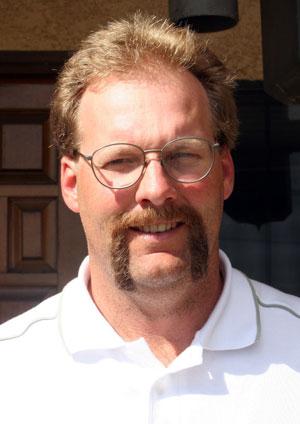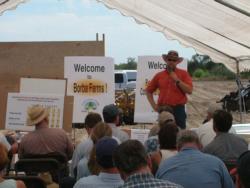CT innovators
Bob Prys - 2005

This year’s award recognizes a truly exceptional CT pioneer. In a number of very significant ways, Bob epitomize the intent of this prestigious CT Workgroup award and he inaugurates what we hope will be a long and solid tradition of acknowledging truly outstanding innovation and achievement.
Bob is AgroManager for Borba Farms in Riverdale and has been extremely active and innovative in conservation tillage system development, evaluation and refinement for four years. He has become a true leader of CT innovation in California and we believe that he would be most fitting as a recipient of a CT Farmer Innovator Award.
In 2000, Bob initiated a unique and quite forward-looking farm evaluation of seven different tillage systems in a 28-acre field in Borba Farms’ Riverdale ranch. In this farmer-initiated study, he worked with a team of University of California researchers including Karen Klonsky, Dan Munk, Rich DeMoura, Jon Wroble and Jeff Mitchell, as well as with private industry representatives, Ralph Cesena, Sr. and Jack Young, to compare standard tillage, no-tillage, strip-tillage, and ridge-tillage cotton planting systems within a context of using winter cover crops. Bob not only initiated the original concept for this work, but doggedly worked exceedingly hard at every step of its implementation to see it eventually succeed in terms of yielding state-of-the-art farmscale information related to the potential of various CT cotton systems for the central San Joaquin Valley. He also designed and built a prototype postharvest cotton stalk management tool (“Go Devils” used in conjunction with a Bigham Brothers Terratill) that enabled essentially a two-pass system for Pink Bollworm management. The design for this implement has since been developed commercially by Bigham Brothers and is now offered as one of their CT implements.
Bob was exceedingly tenacious and “attentive to details” and his persistence through a three-year, replicated evaluation study resulted in this work being accepted for publication in California Agriculture, the quarterly outreach vehicle of the University of California’s Division of Agriculture and Natural Resources. (A copy of this In Press manuscript is attached). His work has demonstrated the following outcomes. Conservation tillage planting and stalk management systems produced yields comparable to those of standard till practices in three back-to-back cotton crops in Riverdale, CA. These reduced till systems decreased the number of tractor operations by 41 to 53%, fuel use by 48 to 62% and overall production costs by 14 to 18%.
Bob is not only a vary “hands-on” manager and research partner, but he is without question, one of the hardest working collaborators we have worked with. He was frequently literally “on his hands and knees” evaluating various aspects of cotton planting and soil management throughout the three years of the farm study he conducted. He also recently evaluated the potential of stale seed bed planting without pulling a soil cap for cotton.
Bob has hosted three formal, major field days at his farm and is one of the most involved farmer members in our UC / NRCS CT Workgroup. He also voluntarily has hosted several informal groups for Jeff Mitchell during the past several years and was even selected to host USDA NRCS Assistant Secretary Mack Gray during his visit to California in 2004. Bob is now clearly recognized as a cutting edge CT innovator for cotton in California.
Bob is a very tenacious, curious and “dollars and sense” innovator. He has solid grounding in why standard till systems work and what they achieve. He has approached his CT innovation work from the perspective of seeing whether he can equal or exceed productivity, while at the same time eliminating operations and expenses. He is exceedingly thorough. Back in 2000 when no-till, ridge-till and strip-till were completely unknown in this region, Bob worked doggedly to learn all about these various planting systems and to optimize each one of them within his on-farm comparison study. He worked very long and hard to do this and the fruits of his labors have been realized. Borba Farms continues to be interested in pursuing further CT options on greater amounts of their West Side SJV acreage as benefits can be shown.
Bob also integrated the use of GPS, strip-till and cotton planting into both wheat stubble and burned down alfalfa. To my knowledge, he was one of the, if not the first person in California to do this.

Bob has also been quite helpful to other CT WG members in terms of sharing and helping with equipment. This has further served to expand the impact and success of the WG.
